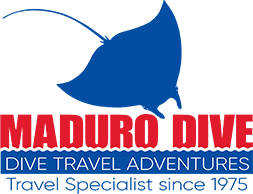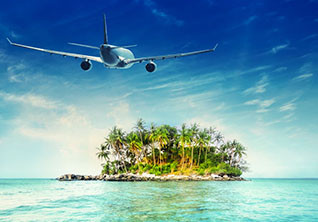Cayman Brac Beach Resort
Cayman Brac Beach Resort has 40 guest rooms and 70 dive sites. The island is located close to Little Cayman in the Caribbean. The scuba diving resort was recently refreshed and the beach renewed. The spectacular free form pool has an adjacent Jacuzzi. Each guest room has a private bathroom complete with hair dryer. The onsite scuba dive center is called Reef Divers. Enjoy our blog article on Cayma...
Compass Point Dive Resort
Compass Point Dive Resort is located on the quiet east end of Grand Cayman Island. The scuba diving resort has three condominium buildings with a total of 28 units. One bedroom studios have kitchenettes, but the other units have full kitchens, with private balconies or patios with pool or panoramic ocean views. If you are serious about diving, then it's about as far away from the nightlife as you...
Grandview Condominiums Grand Cayman
Grandview Condominiums are located on the south end of 7 Mile Beach in George Town on the scuba diving island of Grand Cayman. The units are privately owned and furnished, but they have 21 accommodations available for rental use. Most of the units for rent are 2-bedroom and 2-bathroons units. 1 is a 3-bedroom, 2-bathroom unit. You can choose between the ground floor, 2nd floor, and top floor units...
Little Cayman Beach Resort
Little Cayman Beach Resort is in the Caribbean ocean just south of Miami and Cuba. This boutique scuba diving resort has 40 rooms with either an ocean view or pool view. Each room has a ceiling fan, private bathroom with hair dryer, and a mini fridge. The resort offers many dive sites is next to the ocean with a very long sandy beach. Enjoy our article on Little Cayman
Little Cayman Beach Resort ...
Sunset House
Sunset House is a scuba diving resort in Grand Cayman and about 1.2km from downtown George Town. This is a boutique resort with 36 rooms and four different room styles. The father of Cayman's recreational diving, Bob Soto, was asked to take guests out diving. More importantly, he taught a 12 year old named Adrian how to dive. As a result, Sunset Divers, the onsite dive center, was first opened i...
The Club At Little Cayman
The Club at Little Cayman is in the Caribbean offering scuba diving to 70 dive sites in upscale accommodations . There are 8 luxury scuba diving condominiums with one, two, or three bedrooms. The opulent villas have either a panoramic ocean front view, or garden and pool view. The resort is a short walk to and has access to all the amenities of next to the ocean Little Cayman Beach Resort. Enjoy...
Wyndham Reef Resort Grand Cayman
Scuba Diving in Grand Cayman? Wyndham Reef Resort Grand Cayman has Studios and Deluxe studios with kitchenettes. So, they also have 1, 2, & 3-bedroom Condos with full kitchens and a king bed. Even the kitchenettes have a microwave and mini fridge. Condos also have a balcony or terrace. Enjoy our blog article on Destination Spotlight: The Cayman Islands-Grand Cayman.
Wyndham Reef Resort Grand...



















